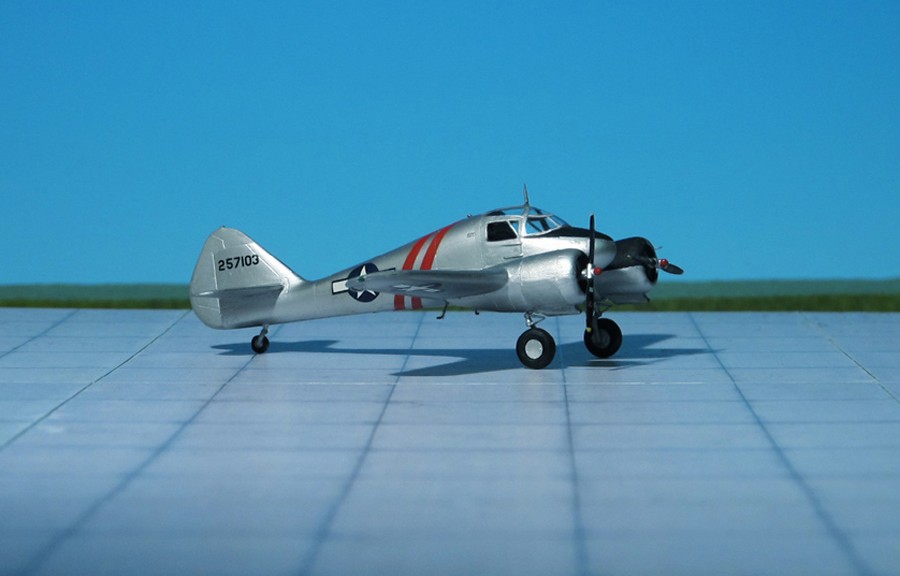TYPE: Advanced trainer aircraft
ACCOMMODATION: Crew of two – student and instructor
POWER PLANT: Two Lycoming R-680-9 radial engine, rated at 295 hp each
PERFORMANCE: 197 mph
COMMENT: The Curtiss-Wright AT-9 Jeep was a twin-engined advanced trainer aircraft used by the United States during World War II to bridge the gap between single-engined trainers and twin-engined combat aircraft. The AT-9 had a low-wing cantilever monoplane configuration and retractable landing gear. Curtiss-Wright anticipated the requirement for this type of “high-performance” aircraft and designed the Curtiss-Wright CW-25, a twin-engined trainer, which possessed the takeoff and landing characteristics of a light bomber. Using the same basic design as the larger Cessna AT-17 Bobcat, the new CW-25 was designed to be simulate the demands of multi-engined operations. The design featured a small layout, grouping two Lycoming R-680-9 radial engines forward and using a retractable tailwheel landing gear to achieve the performance necessary to meet the requirements of an advanced trainer. The single CW-25 prototype acquired for evaluation had a welded steel-tube fuselage structure with the wings, fuselage and tail unit fabric-covered. The first prototype Model 25 flew in 1941 and the production version entered service as the AT-9 in 1942. Named the “Fledgling” by Curtiss-Wright, it commonly became known as the “Jeep” in the USAAF. The prototype CW-25 had a fabric-covered steel tube fuselage and fabric-covered wings and tail units, but production AT-9s were of stressed metal skin construction. The AT-9 was purposely designed to be less stable and proved to be difficult to fly or land, which made it particularly suitable for teaching new pilots to cope with the demanding flight characteristics of a new generation of high-performance, multi-engined aircraft such as the Martin B-26 Marauder and Lockheed P-38 Lightning. A total of 491 AT-9s were built before production ended and a new production run of 300 of the generally similar AT-9A commenced (Ref.: 23).













